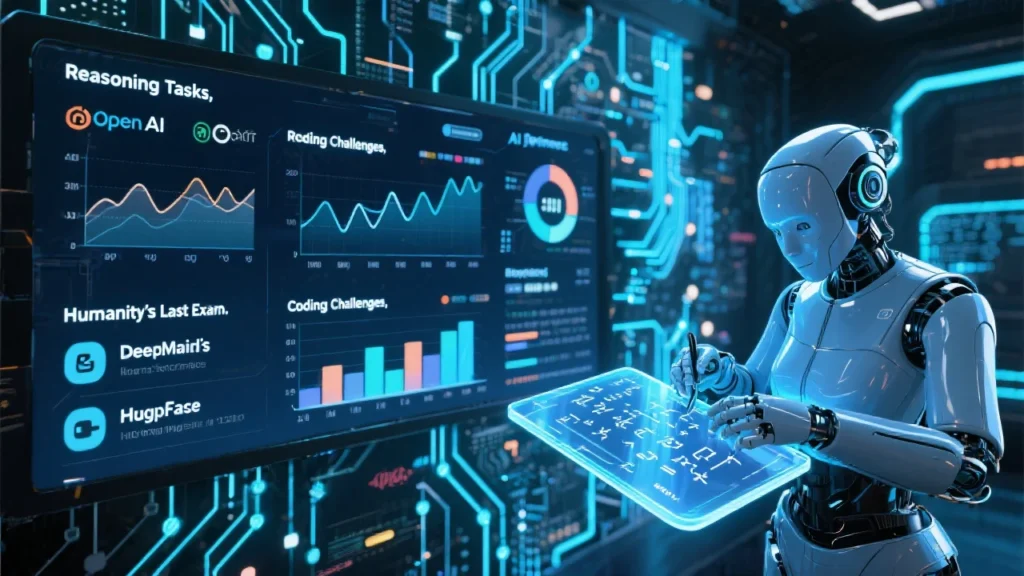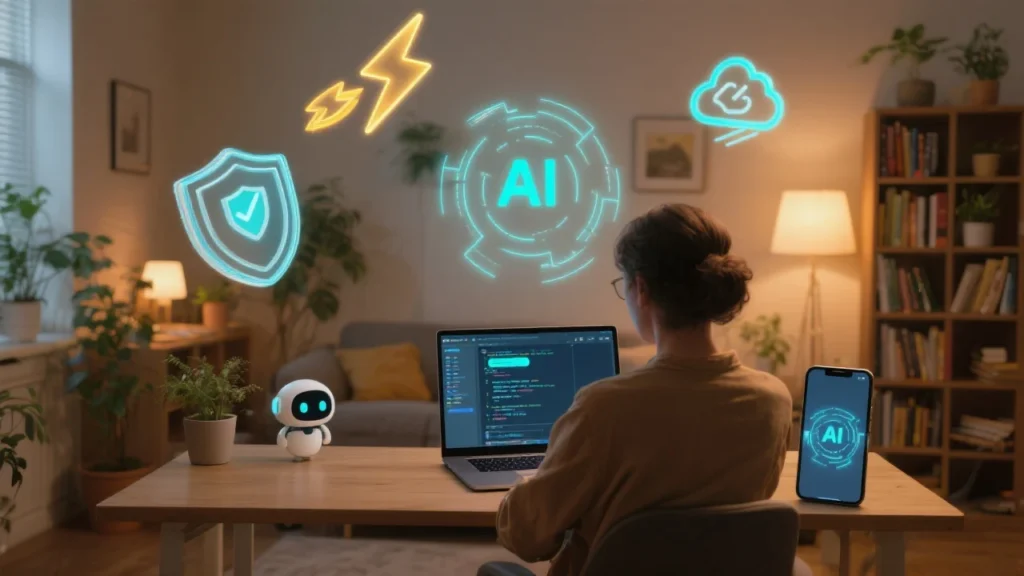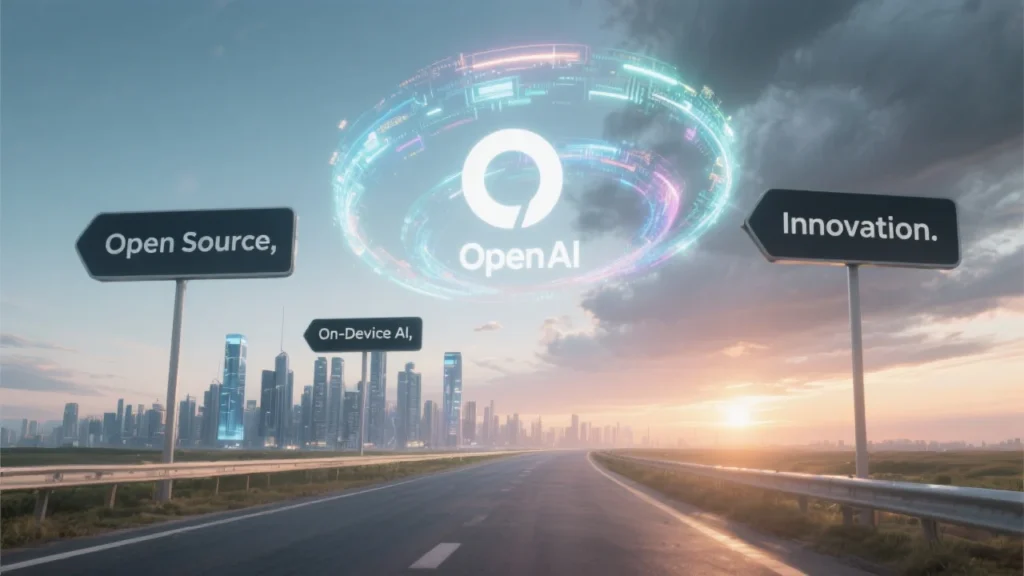OpenAI just dropped a bombshell. The AI giant released its first open-weight models in over six years. These aren’t your typical cloud-based AI tools. They’re designed to run directly on your laptop, smartphone, or personal computer.

The Big Announcement: GPT-OSS Models Are Here
OpenAI unveiled two powerful models under the GPT-OSS banner. The company calls them gpt-oss-120b and gpt-oss-20b. These numbers represent their parameter counts – 120 billion and 20 billion respectively.
What makes this release special? It’s OpenAI’s first venture into open-weight models since 2019. That’s before ChatGPT even existed. The timing isn’t coincidental either.
CEO Sam Altman previously admitted OpenAI had been “on the wrong side of history” by not releasing open models. The rise of competitors like DeepSeek forced their hand. Developers were flocking to open alternatives for their lower costs and customization options.
Two Models, Different Strengths
The larger gpt-oss-120b model packs serious punch. It performs similarly to OpenAI’s existing o4-mini model. But here’s the kicker – it runs on a single Nvidia GPU with 80GB of memory.
The smaller gpt-oss-20b model is the real game-changer for everyday users. It matches o3-mini’s performance while running on just 16GB of memory. That’s less than many modern laptops come with standard.
Both models excel at reasoning tasks. They can browse the web, write code, and operate AI agents. OpenAI designed them to work with existing APIs too.
Hardware Requirements Made Simple
OpenAI optimized these models for consumer hardware. The 120-billion parameter version needs that single high-end GPU. But the 20-billion parameter model? It’s practically plug-and-play.
Sixteen gigabytes of RAM isn’t asking much in 2025. Most decent laptops ship with that amount. Some smartphones are approaching those specs too.
The models come pre-quantized in MXFP4 format. This compression technique reduces file sizes without sacrificing much performance. It’s like having a high-quality photo that takes up less storage space.
Safety First Approach
OpenAI learned from past controversies. They subjected GPT-OSS to rigorous safety testing. External firms evaluated the models for cybersecurity risks and potential misuse.
The company tested adversarially fine-tuned versions too. This means they deliberately tried to make the models misbehave. Then they fixed those vulnerabilities.
Chain of thought reasoning is visible in these models. Users can see how the AI arrives at its answers. This transparency helps monitor for deception or misuse.
Wide Platform Support
OpenAI didn’t go it alone for this release. They partnered with major tech companies and platforms. Microsoft Azure, Hugging Face, AWS, and Databricks are all on board.
The models work across different hardware too. Nvidia, AMD, Cerebras, and Groq chips can all run them. This broad compatibility ensures developers aren’t locked into specific hardware choices.
Microsoft announced GPU-optimized versions for Windows PCs. These will be available through Foundry Local and the AI Toolkit for VS Code. Mac users aren’t left out either – there are reference implementations for Apple’s Metal platform.
Developer-Friendly Features
OpenAI released these models under the Apache 2.0 license. This permissive license allows commercial use and modification. Developers can build products around these models without licensing headaches.
The company open-sourced supporting tools too. There’s a harmony renderer in both Python and Rust. Reference implementations help developers get started quickly with PyTorch.
Popular AI platforms already support the models. Ollama, llama.cpp, and LM Studio users can download them immediately. Cloud providers like Fireworks, Together AI, and Baseten offer hosted versions.
Performance Benchmarks
OpenAI claims strong performance across multiple tasks. The models excel at coding challenges and reasoning tests. They perform well on Humanity’s Last Exam – a benchmark for advanced AI capabilities.
However, OpenAI hasn’t shared direct comparisons with competitors. We don’t know exactly how they stack up against Llama, DeepSeek, or Google’s Gemma models. This omission is notable given the competitive landscape.
Greg Brockman, OpenAI’s cofounder, praised the team’s work. “These are incredible models,” he said. “The team really cooked with this one.”
The Bigger Picture
This release represents a major strategy shift for OpenAI. The company built its reputation on closed, proprietary models. ChatGPT’s success came from keeping the technology under wraps.
But the AI landscape changed rapidly. Open-source alternatives gained traction. Developers wanted more control over their AI tools. They needed models they could customize and run locally.
OpenAI researcher Chris Cook noted that most customers already use open models alongside OpenAI’s services. “We wanted to plug that gap,” he explained during a media briefing.
Local AI Revolution

Running AI models locally offers several advantages. There’s no need for internet connectivity once downloaded. Data stays on your device, improving privacy. Response times can be faster without network delays.
The 20-billion parameter model makes local AI accessible to regular users. You don’t need expensive server hardware or cloud subscriptions. A decent laptop becomes an AI powerhouse.
This democratization of AI technology could spark innovation. Small developers and researchers gain access to powerful tools. They can experiment without worrying about API costs or usage limits.
Commercial Implications
The Apache 2.0 license removes barriers for commercial use. Startups can build products around these models without paying licensing fees. Established companies can integrate them into existing workflows.
This could disrupt the AI services market. Why pay for cloud-based AI when you can run equivalent models locally? The cost savings could be substantial for high-volume users.
However, cloud services still offer advantages. They handle scaling, updates, and maintenance automatically. Local deployment requires technical expertise and ongoing management.
Technical Specifications
Both models support the Responses API format. This compatibility means existing applications can switch to local models with minimal changes. Developers don’t need to rewrite their code from scratch.
The models handle various tasks well. Few-shot function calling works reliably. Chain of thought reasoning provides transparency. Tool use capabilities enable complex workflows.
HealthBench performance suggests medical applications are possible. However, OpenAI hasn’t disclosed specific accuracy numbers or safety certifications for healthcare use.
Getting Started
Trying these models is straightforward. OpenAI’s Code Playground offers immediate access without downloads. This lets users test capabilities before committing to local installation.
For local deployment, Hugging Face hosts the model weights. The files are large – expect multi-gigabyte downloads. But once downloaded, they run offline indefinitely.
Multiple inference engines support the models. Choose based on your technical comfort level and hardware setup. LM Studio offers a user-friendly interface for beginners.
Future Roadmap
OpenAI hasn’t committed to regular updates for GPT-OSS. This differs from their closed models, which receive frequent improvements. Open models might follow a different development cycle.
The company hopes smaller developers will embrace these tools. “If you lower the barrier to access, then innovation just goes up,” said Brockman. “You let people hack, then they will do things that are incredibly surprising.”
This philosophy could lead to unexpected applications. When developers have unrestricted access to powerful AI, creativity flourishes. We might see innovations that OpenAI never imagined.
Competitive Response
Other AI companies will likely respond to this move. Google, Meta, and Anthropic all offer competing models. OpenAI’s entry into open-weight models intensifies competition.
This benefits users ultimately. More options mean better performance and lower costs. The race to create the best open models will drive rapid improvements.
However, it also raises questions about AI safety and governance. Open models are harder to control once released. Ensuring responsible use becomes more challenging.
The Road Ahead

OpenAI’s GPT-OSS release marks a turning point. The company that popularized closed AI models now embraces openness. This shift reflects changing market dynamics and user demands.
Local AI deployment will likely become more common. As models become more efficient and hardware improves, the advantages of local processing grow. Privacy, cost, and control all favor on-device AI.
The success of GPT-OSS will influence OpenAI’s future strategy. If developers embrace these open models, we might see more releases. The company could balance closed and open offerings based on market response.
For now, users have powerful new tools at their disposal. AI capabilities that once required expensive cloud services now run on everyday hardware. This democratization of AI technology promises to accelerate innovation across industries.
The era of AI running on your laptop has officially begun.










Comments 2